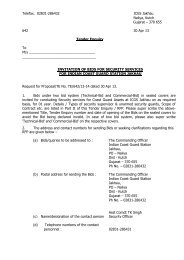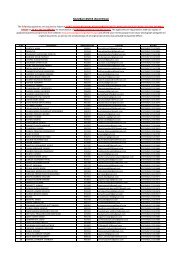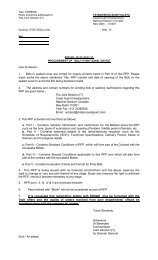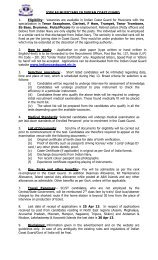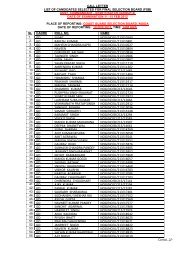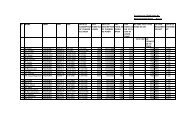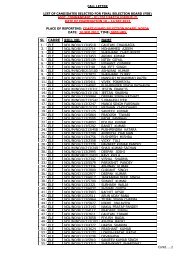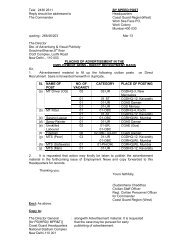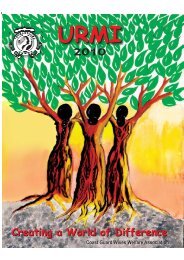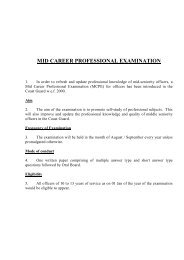eastern region oil spill disaster contingency plan - Indian Coast Guard
eastern region oil spill disaster contingency plan - Indian Coast Guard
eastern region oil spill disaster contingency plan - Indian Coast Guard
Create successful ePaper yourself
Turn your PDF publications into a flip-book with our unique Google optimized e-Paper software.
- 92 -<br />
surface currents have a tendency of flowing towards NE-Ely direction with<br />
speeds of the order of 0.25 and 0.5 kts.<br />
June and July<br />
40. General. July is the cloudiest month of the year with sky cloudy to<br />
overcast over most parts of the country and adjoining sea areas. The Southwest<br />
monsoon normally establishes over the entire by the first week of this month.<br />
The SWly winds with mean speed of 15-20 Kts are persistent over Bay of Bengal<br />
and Andaman Sea.<br />
41. Monsoon Trough. A trough of low pressure originating nom the<br />
Northwestern parts of the country extends Southeast wards up to Head Bay. This<br />
trough is known as 'Monsoon Trough' Monsoon Trough normally passes through<br />
Ganganagar, New Delhi, Allahabad and Calcutta. Whenever Monsoon Trough<br />
shifts to north or south of its normal position the strength of the monsoon varies.<br />
Whenever the trough shifts southwards from normal position monsoon over<br />
India strengthens and whenever weekends and Break Monsoon conditions are<br />
experienced over the country.<br />
42. Monsoon Lows /Depressions. Monsoon Lows/depressions form in<br />
the North Bay near the end of the monsoon trough and travel normally along the<br />
monsoon trough. Active monsoon conditions are associated with these monsoon<br />
lows/ depressions. July is the most favorable month for the formation monsoon<br />
depressions over Bay, North of 18 deg North. The frequency of formation of<br />
Cyclone Storms and Depressions per year is 0.08 and .66 respectively.<br />
43. Break Monsoon. When the Monsoon trough shifts towards the foothills of<br />
Himalaya rainfall over most parts of the country decreases significantly and<br />
rainfall increases along the foothills of Himalayas.<br />
(a) Frequency of Break Monsoon. On an average there is one<br />
break in the month of July.<br />
(b) Duration. The duration of the break may vary 3 to 13 days. The<br />
breaks, which occur in July, are short lived and generally last for 3 to 4<br />
days. They are most frequent in the beginning of July and end of August.<br />
(c) Synoptic Features. The synoptic features associated with the<br />
Break Monsoon are given below:<br />
(i) Northward shift of the Monsoon trough towards the foothills<br />
of the Himalayas.




